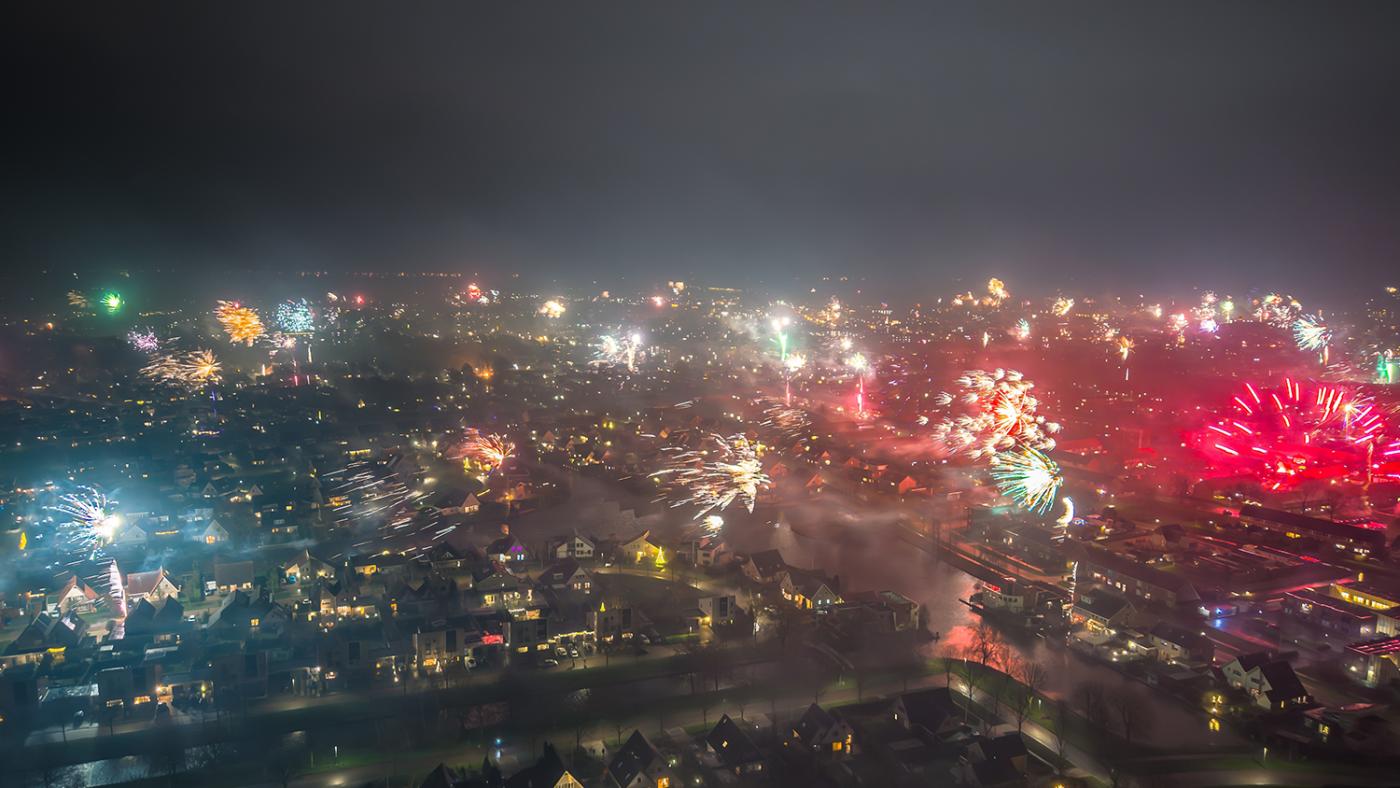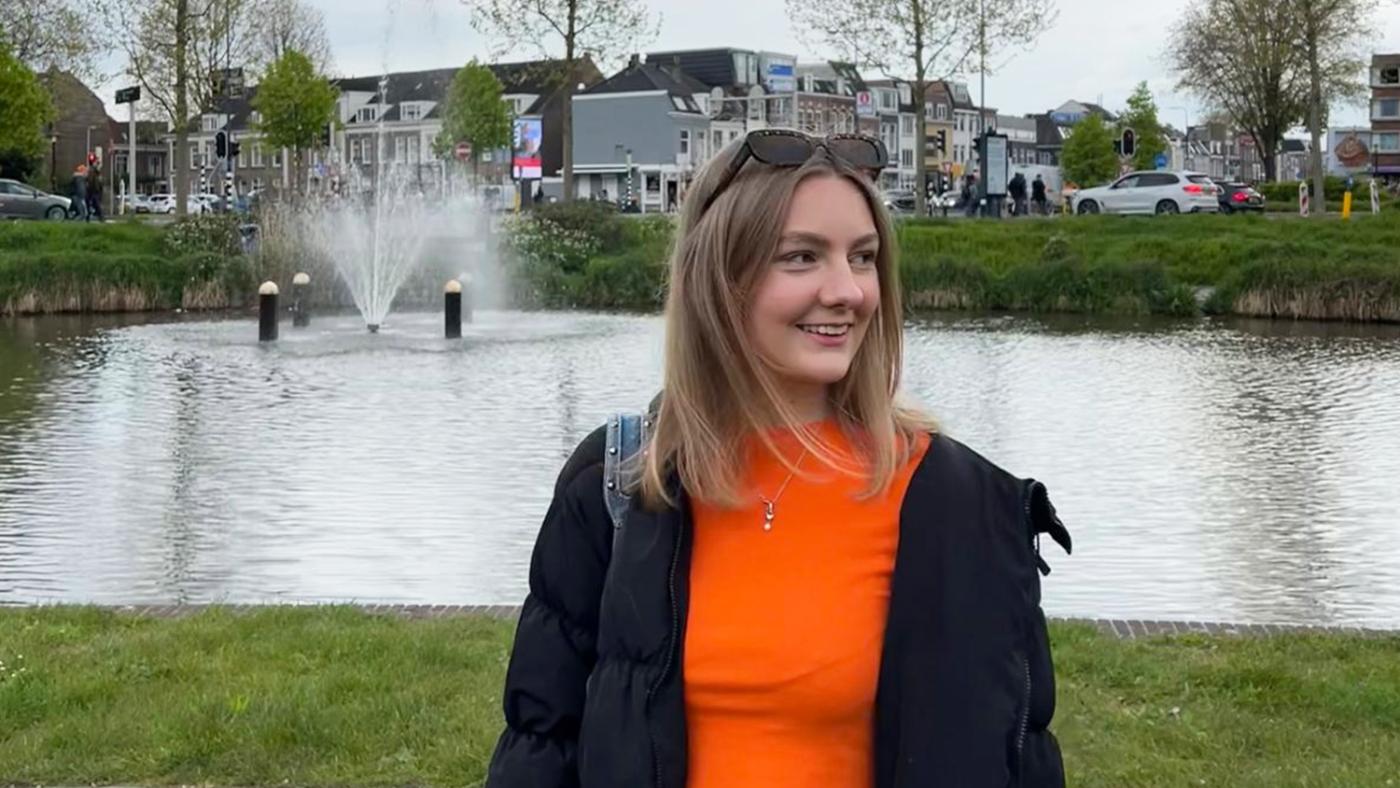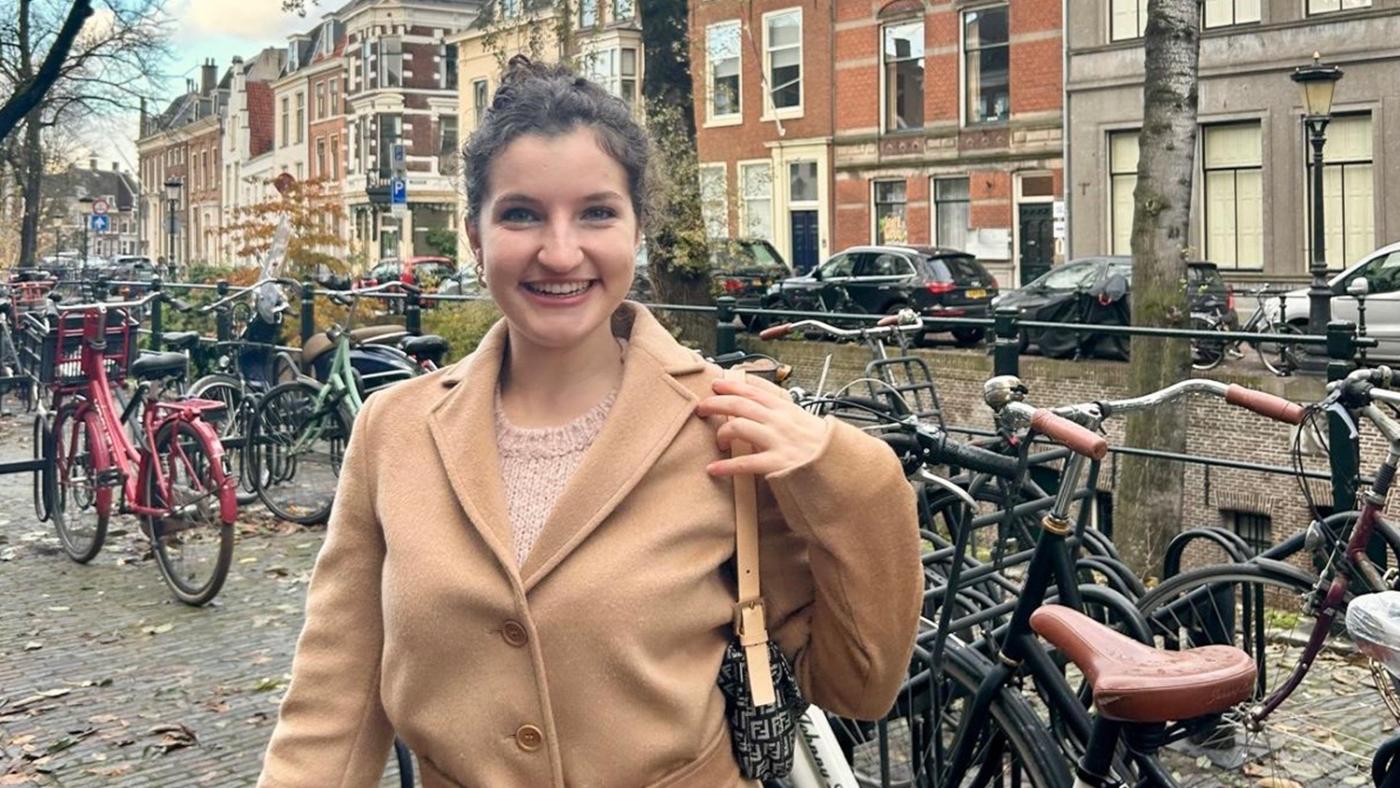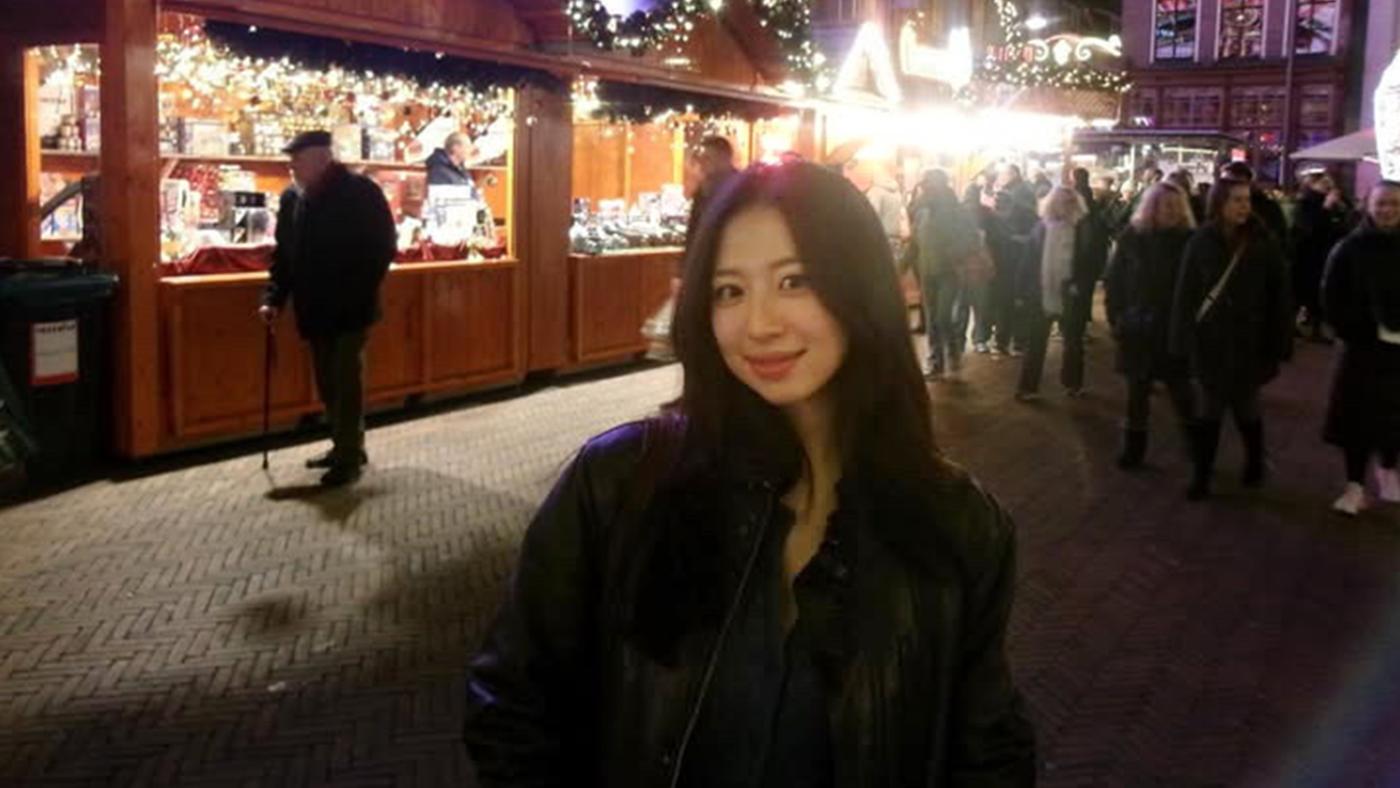International students discover Dutch end-of-year traditions
‘There are fireworks everywhere!’

Setting up fireworks yourself at the stroke of midnight on New Year’s Eve. Watching Sinterklaas, the Dutch version of Sint Nicholas, and his helpers arrive on a boat. Gifting a friend a chocolate bar in the shape of the first letter of their name. These are just some of the winter customs unique to the Netherlands.
Eunyoung (23), a Media and Culture student from South Korea, was flabbergasted after she was invited to celebrate her first Dutch New Year’s Eve in Maastricht. Unsure what to expect, she was astounded by all the fireworks at midnight. “It was just so explosive, like bombs.” However, she says she would prefer to set fireworks off herself in South Korea if given the chance.
She is far from being the only international student amazed by Dutch end-of-year festivities, which is why DUB talked to two more UU students about their perceptions of Sinterklaas, Christmas and New Year’s Eve in the Netherlands.
“It is a part of Dutch culture that I bring with me nowadays”

Mailin Photo: courtesy of the owner
Sinterklaas is a holiday where people get together with loved ones to exchange gifts. Celebrated on December 5, this festivity is a big deal for children because Sinterklaas, a figure based on Saint Nicholas, is in the Netherlands to bring them presents. Instead of coming from the North Pole on a flying sleigh, Sinterklaas comes from Spain on a boat, aided by a group of helpers known as Zwarte Pieten (Black Petes).
Mailin (20) is a Liberal Arts and Sciences student from Germany. She says she and all her friends like this holiday. “I think we're all just excited to have something to celebrate. It’s nice to have a celebration that's different from what we're used to, but still about being together as a community.”
The figure of Zwarte Piet is a controversial one, as he traditionally wears blackface, bright red lipstick and golden hoop earrings. While traditional Peten are still around, updated versions with smudged faces to look like they are dirty with soot are becoming increasingly common. Mailin thinks that this figure can be problematic. “Some of the pictures I saw were very stereotypical, like in children's books. I think that it shouldn't be done like that,” she ponders.
However, she acknowledges that finding a solution can be tough because some people want to honour the past while others want traditions adjusted to current times. “It’s part of the history of the country, something that has been going on for years. So, you shouldn't just erase it. At the same time, you can't continue doing it the way you were.”
Mailin has watched nativity plays in Germany where the actor playing one of the three kings had his face painted black too. “I find blackface very offensive. But I guess in the Netherlands it has more of a ‘looking down on them’ connotation because they are just Sinterklaas’ helpers.”

Maria Photo: courtesy of the owner
Maria (20) is an Economics student from Italy and shares Mailin’s view on Zwarte Piet. She thinks this is a sensitive topic and agrees that “one should keep the tradition whilst adapting it to a more modern age.” But, to her, the debate surrounding Sinterklaas’ helpers is not the main thing about this holiday. Surprises, gifts that are disguised and wrapped in a themed way, are her favourite part. “Surprises are definitely a part of Dutch culture that I bring with me nowadays because they bring back precious childhood memories.”
Maria actually has several years of experience with Dutch winter, having attended an international school in the Netherlands for five years because her parents worked here as expats. They moved back to Italy but, a few years later, she decided to attend university in Utrecht.
She remembers receiving a swimming pool-themed surprise from one of her classmates, which she kept for many years. “I always enjoyed making these presents and watching my siblings do the same. My dad would join in as he’s very creative. He would give us a bunch of ideas of what we could do and then help us build it.” Today, she no longer practices the tradition because it is not well-known among her international friends, but she is considering reviving it in the future. “Maybe later on, when I have my own family.”
“For us, Christmas is the big deal”
A culture shock shared by all three students was discovering that Christmas does not hold the same post in the Netherlands as it does in their home countries. Maria: “The Dutch celebrate Sinterklaas on the 5th and then Christmas is a kind of secondary holiday.” Mailin was confused at first too, as the German Nikolaus celebration happens one day later, on December 6. “For us in Germany, Christmas is the big deal. That's what you celebrate. Nikolaus is just this little thing before it, so the fact that Sinterklaas is celebrated at such a huge scale in the Netherlands surprised me.”
Eunyoung is captivated by the Christmas lights in the streets, as that is not common in South Korea, where mainly department stores are decorated. “All the streets have lights here. I would say it’s a better tradition compared to Korea.” However, she sees some similarities between Korean and Dutch Christmas: Christians in Korea also go to church while non-religious people spend time with their family and friends.
To Maria, no amount of kerststol or gourmetten could ever come close to Italian Christmas. “Christmas and New Year's I would still do the Italian way because that's how I grew up. We have a big dinner on the 24th of December and then a big lunch on the 25th.” Additionally, they celebrate La Befana on the 6th of January, a tradition that symbolises the three wise men's search for baby Jesus. “Befana is a nice witch. She gives you candies, maybe small presents. But if you've been mean, you get charcoal.”
“I think it’s cool to welcome the new year by diving into the sea”

Eunyoung Photo: courtesy of the owner
The Dutch love to start a new year with as many fireworks as possible, which shocked Eunyoung. “They literally do fireworks everywhere!” She explains that, in South Korea, people go to Seoul or the city centre to watch the fireworks. “But it’s the government that does it, not ourselves.”
Eunyoung also heard about the Nieuwjaarsduik (New Year’s Dive) from a friend whose grandfather was doing it. “I heard there's a culture of diving into the sea to welcome the new year. That’s cool, but I haven’t tried it. It sounds too cold to me, so I’d rather just watch the fireworks.”
To uphold her own traditions, Eunyoung made Tteokguk, a rice cake soup, to celebrate the new year. However, Oliebollen have become her new favourite. At first, she didn’t know they were a New Year’s Eve tradition. “I was surprised to see in the news that people were queuing up at Utrecht Central Station to buy them. I love them because I can always find them everywhere. They have a similar texture to the bread I used to eat in Korea.”
Mailin is another fan of oliebollen. “At UCU, I know that a lot of students make an effort to interact with typical Dutch traditions. For example, the running group will run to the city centre and then eat oliebollen together before running back to campus.” In her view, this is a way to engage with Dutch culture while bonding with fellow students.